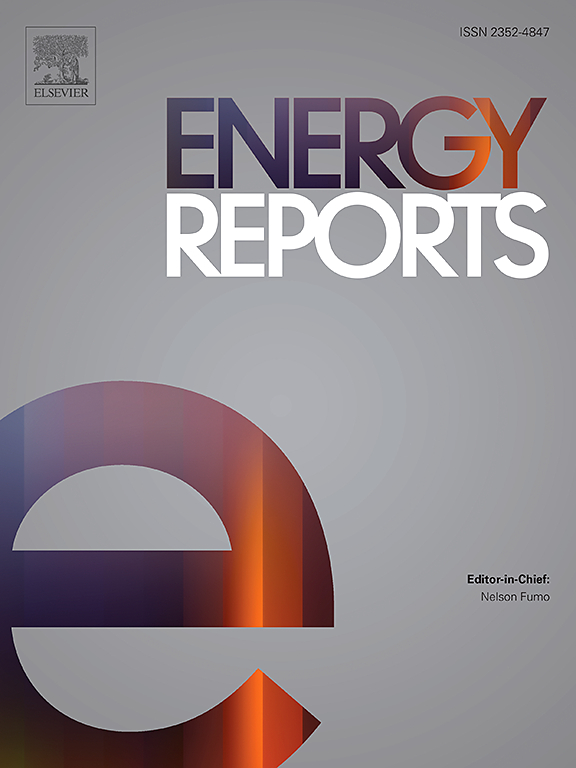基于量子粒子群优化的太阳能光伏微型逆变器系统最大功率点估计算法
IF 5.1
3区 工程技术
Q2 ENERGY & FUELS
引用次数: 0
摘要
光伏系统越来越多地集成到分布式能源网络中,要求紧凑高效的逆变器解决方案能够在可变环境条件下保持稳定运行。为了解决这个问题,利用量子粒子群优化算法开发了单级微型逆变器架构,以增强最大功率点跟踪。其动机在于提高收敛速度和跟踪精度,同时最小化系统复杂性。假设在控制回路中嵌入概率优化算法可以提高对辐照度波动的适应性,并实现更好的法规遵从性。提出的设计采用反激变换器拓扑结构,将电压升压、电流隔离和直流到交流电的转换结合到一个统一的平台中。该控制策略集成了基于量子粒子群优化的最大功率点估计机制和比例积分控制器,并通过可编程控制器和太阳能模拟器进行了仿真和实时硬件测试。定量结果表明,该系统实现了95 - 98%的最大功率跟踪效率,电压和电流总谐波失真水平分别为3.6%和4.9%,满足电网合规要求。该方案确保了系统的稳定性,相位裕度为58.7度,并且在动态变化的辐照度条件下响应良好。这项工作表明,将智能控制与紧凑的反激式架构集成在一起,可以实现可靠、高效、符合电网要求的太阳能微型逆变器,适用于低功耗住宅和独立太阳能应用。本文章由计算机程序翻译,如有差异,请以英文原文为准。
Enhanced maximum power point estimation algorithm using quantum particle swarm optimization for solar photovoltaic micro inverter systems
Photovoltaic systems are increasingly integrated into distributed energy networks, demanding compact and efficient inverter solutions that can maintain stable operation under variable environmental conditions. To address this, a single-stage micro-inverter architecture is developed using a quantum-behaved particle swarm optimization algorithm for enhanced maximum power point tracking. The motivation lies in improving the convergence speed and tracking accuracy over conventional methods while minimizing system complexity. The hypothesis is that embedding a probabilistic optimization algorithm within the control loop can improve adaptability to irradiance fluctuations and achieve better regulatory compliance. The proposed design employs a flyback converter topology that combines voltage step-up, galvanic isolation, and direct current to alternating current inversion into a unified platform. The control strategy integrates a quantum-behaved particle swarm optimization-based maximum power point estimation mechanism and a proportional-integral controller, both validated through simulation and real-time hardware testing using a programmable controller and solar simulator. The quantitative results show the system achieves maximum power tracking efficiency of 95–98 percent, with voltage and current total harmonic distortion levels of 3.6 percent and 4.9 percent, respectively, meeting grid compliance requirements. The proposed solution ensures system stability with a phase margin of 58.7 degrees and responds well under dynamically varying irradiance conditions. This work demonstrates that integrating intelligent control with a compact flyback-based architecture results in a reliable, efficient, and grid-compliant solar micro-inverter suitable for low-power residential and standalone solar applications.
求助全文
通过发布文献求助,成功后即可免费获取论文全文。
去求助
来源期刊

Energy Reports
Energy-General Energy
CiteScore
8.20
自引率
13.50%
发文量
2608
审稿时长
38 days
期刊介绍:
Energy Reports is a new online multidisciplinary open access journal which focuses on publishing new research in the area of Energy with a rapid review and publication time. Energy Reports will be open to direct submissions and also to submissions from other Elsevier Energy journals, whose Editors have determined that Energy Reports would be a better fit.
 求助内容:
求助内容: 应助结果提醒方式:
应助结果提醒方式:


